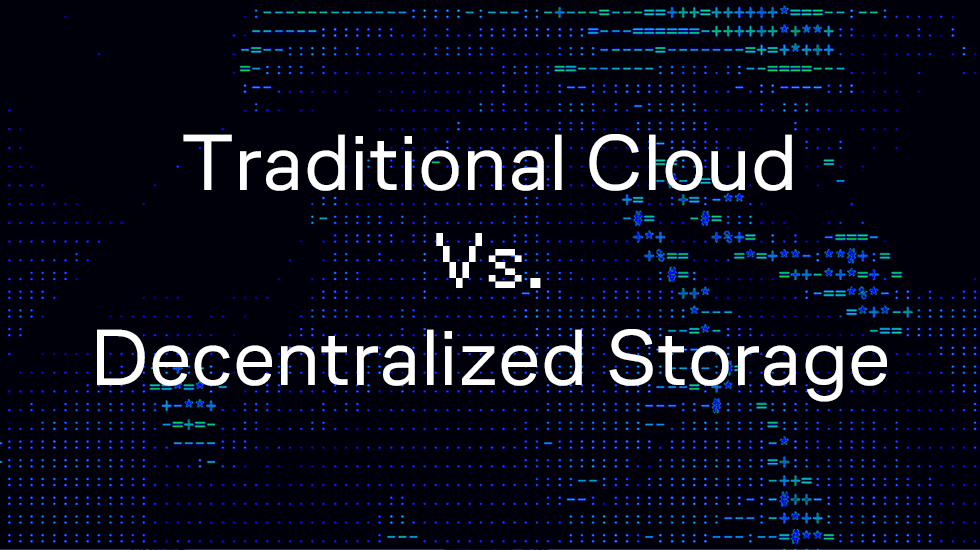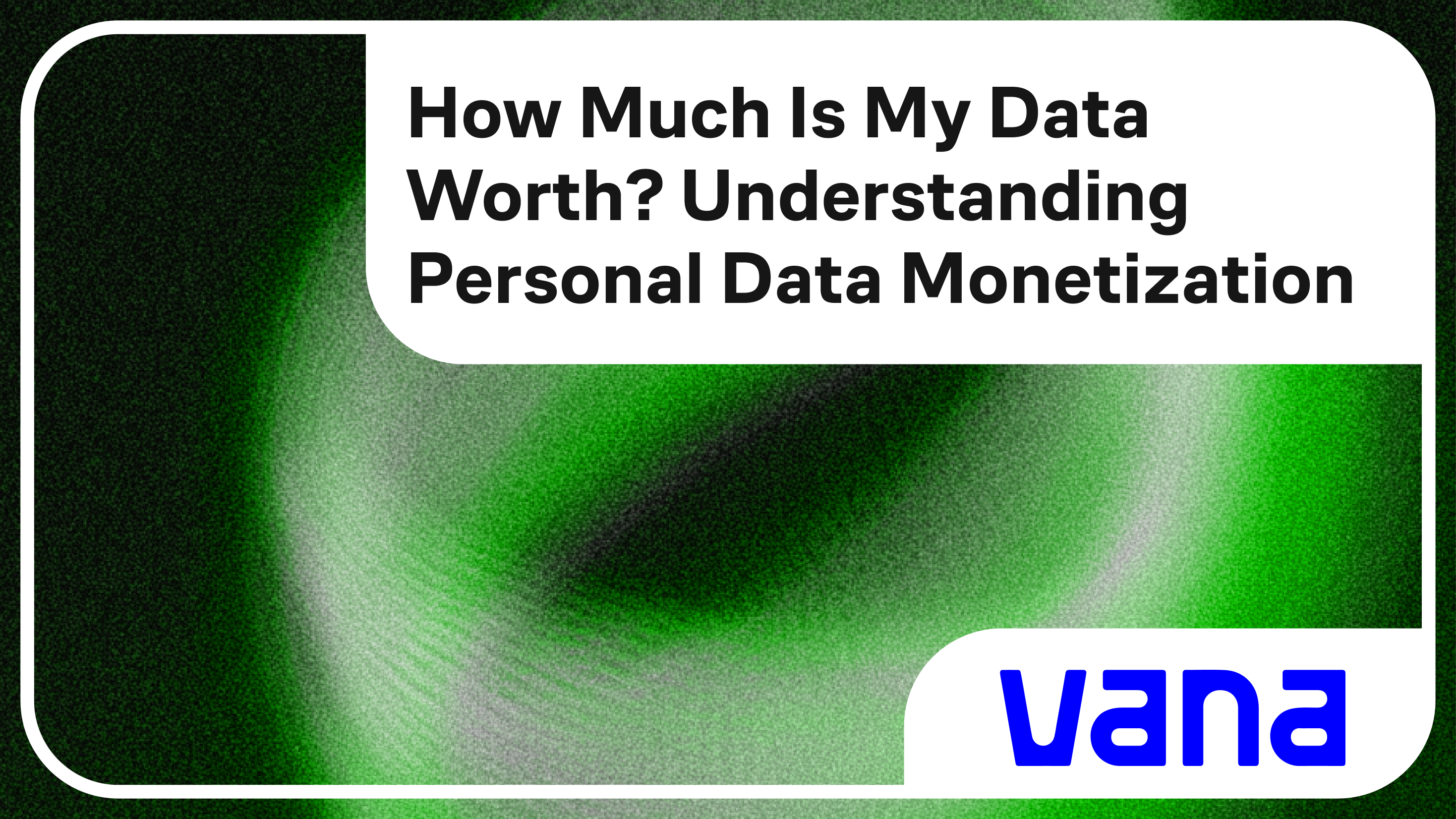Decentralized Storage vs Traditional Cloud: What It Means for Your Personal Data
For years, storing data online has meant trusting a handful of massive corporations with your files, photos, and personal information. Services like Google Drive, iCloud, and Dropbox made life easier but at a cost. Behind their convenience lies a trade-off that has quietly reshaped the internet: control over your data for the price of convenience.
Now, a new model is emerging, one that flips this balance entirely. Decentralized storage isn’t just a technical upgrade, it’s a movement toward transparency, personal data ownership, and user empowerment. It’s also central to how Vana is reimagining the future of data protection.
The Evolution of Digital Storage
Data storage has come a long way. We started with floppy disks and external drives, what many now call local storage. Then came cloud storage, where tech giants offered seamless access from anywhere in exchange for hosting your files on their servers.
In this cloud storage vs local storage shift, the cloud quickly became dominant because it was scalable, shareable, and user-friendly. But over time, cracks began to show. Centralized systems meant centralized control, and centralized risk.
Today, as users become more privacy-conscious and aware of how data shapes everything from advertising to AI, decentralized data storage is gaining traction as a better alternative.
The Traditional Cloud Model — Convenience with a Catch
The traditional cloud has always been about ease: upload, sync, and forget. But that convenience comes with strings attached. Most cloud platforms such as Amazon Web Services, Google Cloud, & Microsoft Azure, operate under the same structure: your data lives on their servers, under their rules.
That means companies often use aggregated user data to improve algorithms & analyze trends or, in some cases, inform targeted advertising. In short, how companies use your data often benefits them more than it benefits you.
There’s also the issue of control. When your files live on someone else’s infrastructure, they’re subject to corporate policies, server outages, and regional data regulations that can change overnight.
Worse, security breaches are no longer rare occurrences. In 2023 alone, billions of personal records were compromised across cloud-based systems.According to a Harvard Business Review article, the speed of cloud adoption has far outpaced the implementation of meaningful security standards, leaving both companies and individuals exposed.
Traditional cloud models made storage simple. However, they also made users dependent and ultimately invisible.
What Is Decentralized Storage?
At its core, decentralized storage rethinks how data is stored, accessed, and controlled. Instead of saving your files in a single corporate data center, decentralized systems distribute encrypted fragments of your data across multiple independent nodes worldwide.
This structure, known as decentralized cloud storage, has three defining features:
- Distribution: Data isn’t stored in one place, reducing the risk of loss or attack.
- Encryption: Only you (and those you authorize) hold the keys to decrypt your files.
- Redundancy: Multiple backups across nodes ensure resilience even if some go offline.
Unlike traditional cloud providers, there’s no single point of failure. There is no central authority that can lock you out or mine your data for value.
For a deeper technical look at how decentralized systems achieve this, see the Vana Whitepaper, which outlines how blockchain principles support private, verifiable, and user-owned data ecosystems.
How Decentralization Strengthens Data Protection
Data protection is about more than keeping bad actors out, it’s also about controlling who gets in. In centralized systems, users have little oversight of how their data is stored or shared once uploaded.
In contrast, decentralized storage ensures that users, not platforms, hold the encryption keys. Data remains secure by design, as access requires explicit user consent rather than platform permission.
This model also strengthens data sovereignty, or the right of individuals to determine how and where their data is stored. Decentralization eliminates jurisdictional uncertainty (such as when foreign governments demand access to servers abroad) by distributing data globally and encrypting it locally.
Vana’s Vision articulates this shift clearly: sovereignty means moving from dependency on corporate data custodians to personal control. An internet where users are both the creators and the gatekeepers of their information.
Vana’s Approach: Empowering Users Through Decentralization
Vana is pioneering a system where decentralization doesn’t just protect, it empowers. Through a combination of blockchain architecture and user-first design, Vana enables a new form of personal data ownership that’s both private and participatory.
The Vana App serves as your portal to this new model. It allows you to:
- Aggregate and store data across platforms securely.
- Retain full encryption ownership — only you hold the keys.
- Join Data Collectives or Data DAOs that enable ethical data collaboration.
Under the hood, the Vana Protocol ensures decentralized governance and interoperability, while data portability tools make it easy for users to export or migrate their data whenever they choose.
In this model, owning your data doesn’t mean isolation, it means empowerment. Users can contribute to shared projects, participate in ethical AI training, and even earn from their verified data, all without giving up privacy.
Decentralization vs Cloud: A Practical Comparison
When it comes to storing and managing your data, traditional cloud services and decentralized storage take very different approaches.
Control:
In traditional cloud systems, your data is provider-managed. You upload it, and the company running the cloud decides how it’s stored, replicated, and sometimes even analyzed. In decentralized storage, control shifts entirely to the user. Data is self-sovereign — you decide where it lives, how it’s shared, and who has access.
Security:
Traditional cloud platforms rely on platform-based encryption, meaning the service provider manages most security measures. Decentralized systems use end-to-end encryption, with users holding their own keys. No one — not even the platform — can decrypt your data without permission.
Access:
Access in centralized models is determined by the provider. If a company changes its policies or an account is suspended, you can lose access. Decentralized systems remove that dependency; users grant and revoke access directly through cryptographic keys.
Resilience:
Centralized clouds depend on massive data centers, which can fail or go offline. Decentralized storage distributes your files across many nodes, creating a fault-tolerant network that stays online even if some nodes fail.
Data Value:
In traditional systems, platforms often monetize user data through analytics and advertising. In decentralized systems, data value flows back to users. You own your information — and can decide whether to keep it private, share it, or contribute it to collective projects for fair compensation.
Transparency:
Corporate cloud providers typically operate behind opaque privacy policies and closed systems. In contrast, decentralized ecosystems are open-source and verifiable, allowing anyone to audit how data is handled.
This comparison highlights what makes decentralization transformative. It doesn’t just improve infrastructure, it redefines who holds power in the data economy.
Why It Matters for the Future of the Internet
Decentralization represents more than a technological shift; it’s a philosophical one. For decades, the cloud economy has concentrated control among a few companies that determine how digital life functions.
As personal data becomes the foundation of AI and machine learning, data sovereignty is no longer optional, it’s essential.
Even the World Economic Forum acknowledges that blockchain-based systems could restore digital trust by returning ownership to individuals. And as decentralized models scale, many are asking “will data centers become obsolete”?
While the physical infrastructure of data storage will remain, its ownership model is changing fast. The next evolution of the internet won’t be built on central servers, it will be powered by collective, user-owned networks.
Taking Control of Your Digital Life
The transition from cloud to decentralized systems isn’t just a technical upgrade, it’s an entire rebalancing of data ownership. For the first time, individuals can own your data, decide where it lives, and control who accesses it.
Learning how to protect personal data online starts with understanding where it’s stored, and choosing systems that respect your rights as a creator and participant.








